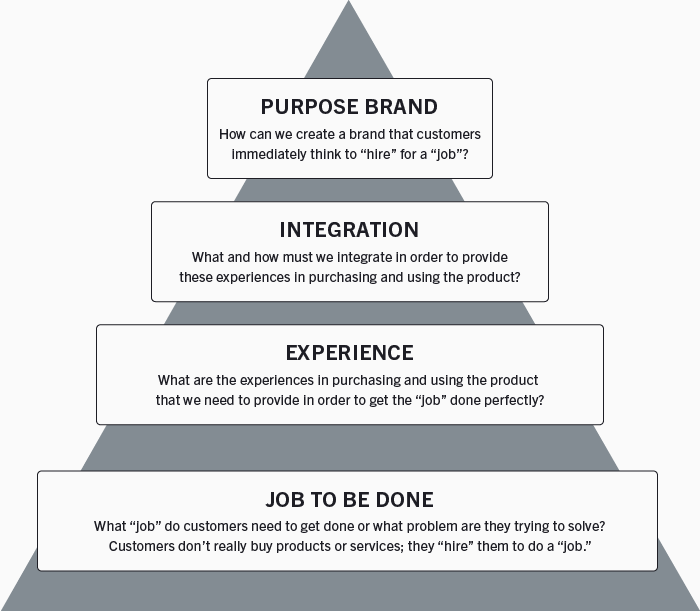The Jobs-to-be-done (JTBD) concept is a theory of consumer action that explains why people buy and use certain products or services. The theory suggests that people have underlying goals or needs that they want to fulfill, and they look for solutions that can help them achieve those goals or needs. The JTBD concept was inspired by a method called Outcome-Driven Innovation (ODI), which was developed by Tony Ulwick, founder of the consulting firm Strategym. ODI was later adopted and popularized by Clayton Christensen, a Harvard Professor, who renamed it jobs to be done. When using this framework, a product team tries to understand what their users really want to accomplish by using their product. For example, a user might buy a drill because their job to be done is to make holes in the wall, not because they want a drill itself
How to identify jobs to be done in your business
Jobs to be done as a business approach can work for any type of product or industry. Follow these steps to discover more about your target customers and the jobs your products can perform for them.
1. Identify unmet customer needs.
Ask yourself the following questions:
What pain points do my customers have in common?
What do they currently lack?
What challenges exist for them?
2. Determine customers’ desired outcomes.
Without reference to your products or solutions you currently provide, complete the following phrases as though you were the customer:
Help me do ________.
Help me to avoid ________.
I need to _______.
For example, “Help me save time in the morning” or “I need to take more clothes when I travel” articulate desires and could lead to product ideas such as an app for scheduling morning routines or a carry-on suitcase with more storage compartments.
You may find it helpful to ask customers and prospects to complete these phrases so that you can gather a variety of jobs to be done insights.
3. Answer key JTBD questions.
What does a customer want to achieve in a particular circumstance?
What could help the customer achieve this, such as resources, tools, or information?
What constraints keep the customer from achieving the desired outcome, such as not having access to needed resources or doubting their abilities?
What are the functional aspects of what they need done? What will it help them do, such as complete a task more efficiently or avoid tasks they don’t want to do?
What social or emotional factors correspond to a customer’s objective, including how they want to feel and be perceived by others?
4. Create a jobs to be done statement.
Using the ideas you gathered in steps 1, 2, and 3, construct a jobs to be done statement that can lead to more product innovations. Draw from the template and music streaming example below.
Jobs to be done template Statement example
I want to (desire/motivation) I want to listen to my favorite songs
when (situation/context) while exercising
so that I can (outcome/result) so that I can feel motivated and inspired
without (pain point/constraint). without having to listen to commercials or skip songs I don’t like.

